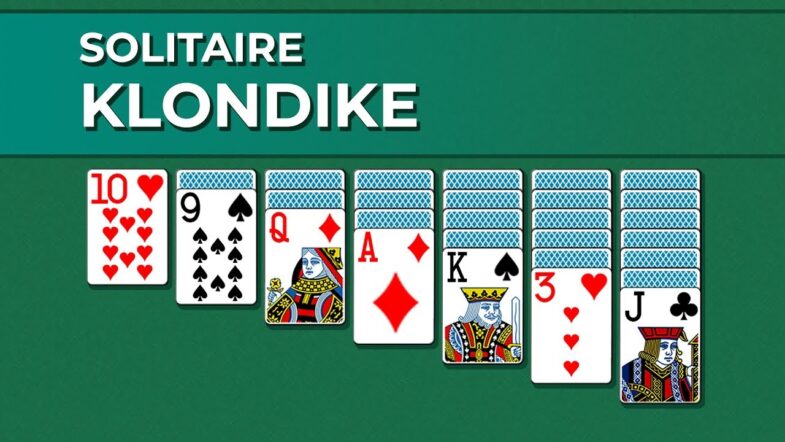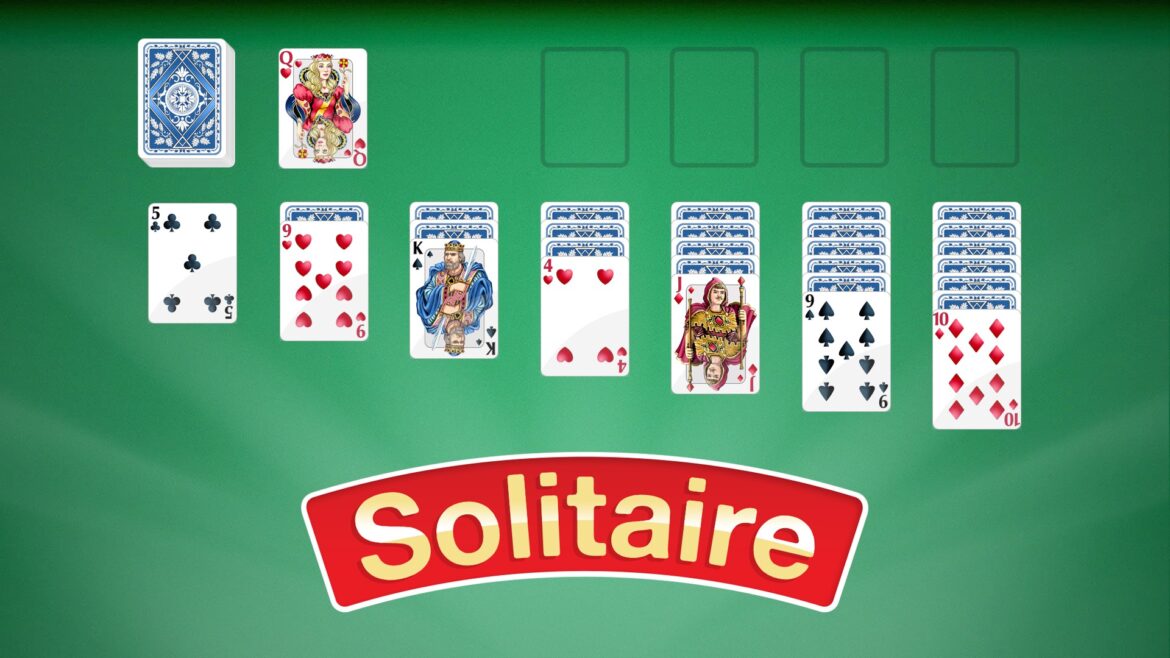Solitaire, a classic card game that has captivated players for centuries, boasts a rich history and a wide range of variations to suit every taste. In this article, we will delve into the history of solitaire, examine its evolution over time, and highlight some of the most popular and unique variations that have emerged from different countries and cultures.
With countless websites available to “play a game” online, it has never been easier to explore the intriguing world of solitaire.
A Brief History of Solitaire
The origins of solitaire can be traced back to Europe, with early mentions dating back to the late 18th century. Initially known as “patience” or “success” in England and France, solitaire was often played as a form of fortune-telling or meditation. The game gained widespread popularity in the 19th century and has since become a beloved pastime for people worldwide, thanks in part to its inclusion in computer operating systems and online platforms.
Klondike Solitaire

Source: youtube.com
Klondike Solitaire is perhaps the most well-known and widely played solitaire variation. Also known as “patience” or simply “solitaire,” Klondike requires players to build up the foundation piles by suit while arranging tableau columns in descending order, alternating colors. The challenge lies in uncovering and freeing the hidden cards and strategically planning moves to create the necessary spaces.
Freecell Solitaire
Freecell Solitaire, popularized by its inclusion in Microsoft Windows, is known for its strategic depth and high rate of solvable games. The game features a tableau of eight columns, four foundation piles, and four free cells. Players must build up the foundation piles by suit while using the free cells to temporarily store cards. Freecell Solitaire requires careful planning and foresight, making it an engaging and challenging variation.
Spider Solitaire
Another popular variation, Spider Solitaire, offers a more complex and strategic experience. The game features ten tableau columns and the option to play with one, two, or four suits. The objective is to create sequences of descending cards in the same suit and move them to the foundation piles. Spider Solitaire requires players to manage multiple tableau columns while working to uncover and free hidden cards, making it a favorite among solitaire enthusiasts.
Baker’s Dozen Solitaire

Source: youtube.com
Baker’s Dozen Solitaire, originating in England, is a unique variation with a distinct set of rules. The game features a tableau of 13 columns, with each column containing four cards. Players must build the foundation piles up by suit while rearranging the tableau columns in descending order, alternating colors. The challenge in Baker’s Dozen lies in its restrictive movement rules, requiring players to strategize and plan their moves carefully.
Influence in Movies, TV, and Literature
In movies, Solitaire has been portrayed as a pastime for introspective characters. One notable example is the film “The Shawshank Redemption,” where the protagonist, Andy Dufresne, uses Solitaire as a way to pass time and maintain his sanity while serving his prison sentence. The quiet moments of contemplation as he plays the game symbolize his resilience and determination.
The game has also made appearances in various television shows, often highlighting its association with intelligence and focus. In the popular series “House of Cards,” the main character, Frank Underwood, frequently engages in a game of Solitaire, demonstrating his calculated and strategic mindset. This depiction reinforces the game’s connection to critical thinking and decision-making.
Literature has also embraced Solitaire as a symbolic element. In novels like “The Catcher in the Rye” by J.D. Salinger, Solitaire is used to represent the protagonist’s isolation and struggle with finding connection in a complex world. The act of playing Solitaire becomes a metaphor for the character’s search for meaning and solace.
Strategies and Tips: Mastering the Game

Source: freepik.com
Mastering Solitaire requires not only a basic understanding of the rules but also a strategic approach. Here are some essential strategies and tips to enhance your gameplay and increase your chances of success:
- Start with the Foundations: Focus on moving cards to the foundation piles as quickly as possible. This creates space on the tableau and allows you to uncover hidden cards.
- Expose Hidden Cards: Prioritize uncovering hidden cards in the tableau by freeing up face-down cards. Look for opportunities to move cards around and reveal those that are face-down.
- Build in Alternate Colors: When moving cards around, follow the alternating color rule. For example, if you have a red 6, you can place a black 7 on top of it. This opens up more possibilities for moving cards and building sequences.
- Empty Columns Wisely: Clearing columns should be done strategically. Avoid emptying a column unless it helps expose a hidden card or creates a beneficial sequence in the tableau.
- Utilize the Undo Option: Many digital Solitaire versions offer an undo option. Don’t hesitate to use it when you make a move that doesn’t yield the desired outcome. It allows you to experiment and improve your decision-making.
Solitaire for Mental Exercise: Cognitive Benefits and Skill Development
Beyond its entertainment value, Solitaire offers numerous cognitive benefits and helps develop valuable skills. Playing this gameregularly can improve mental agility, concentration, and problem-solving abilities. Here are some of the cognitive benefits associated with Solitaire:
Focus and Concentration: Solitaire requires concentration and focus to analyze the tableau and make strategic moves. Regular practice can enhance your ability to maintain attention and ignore distractions.
Planning and Decision-Making: The game demands planning and decision-making skills. As you progress, you learn to evaluate different moves and anticipate future consequences, sharpening your ability to make effective decisions.
Visual Perception: Solitaire involves analyzing and categorizing multiple cards simultaneously. This improves visual perception and the ability to process information quickly.
The fascinating world of solitaire offers a rich history and a diverse range of game types, each with its unique characteristics and challenges. As players explore these variations, they can sharpen their strategic thinking and problem-solving skills while discovering the cultural influences and history behind each game. Whether you’re a seasoned solitaire player or new to the world of card games, the captivating world of solitaire awaits, ready to challenge and entertain you for hours on end.

